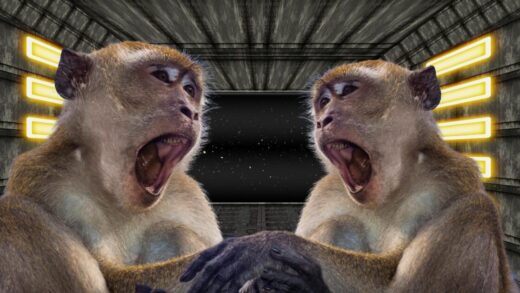Astronomers have made the first-ever observation of light originating from the interconnecting cosmic web linking galaxies
Astronomers on Thursday revealed a secret about the cosmic web. For the very first time, they successfully captured the elusive glow of this colossal structure, often regarded as the universe’s largest interconnected network. This cosmic web consists of intricate filaments that serve as cosmic highways, connecting galaxies spanning the vast expanse of the universe.
These images offer a unique window into the processes governing galaxy formation and evolution, according to astronomers. Moreover, they can contribute to the ongoing quest to pinpoint the ‘mysterious-to-date’ dark matter, a so-called substance constituting approximately 80% of the universe’s mass.
In 2014, astronomers managed to image the cosmic web using radiation emanating from distant quasars – celestial bodies fueled by black holes many times larger than our sun, known as the brightest entities in the universe.

Subsequently, in 2019, another breakthrough occurred when young, star-forming galaxies aided in illuminating the cosmic web’s surroundings. However, the most recent achievement is unprecedented, with astronomers directly capturing its luminance in the profound cosmic abyss situated 10 to 12 billion light-years away.
“Before this latest finding, we saw the filamentary structures under the equivalent of a lamppost. Now we can see them without a lamp,” said Christopher Martin, a distinguished physicist at the California Institute of Technology and the lead author of this pioneering study.
According to cosmological simulations, a significant portion of the universe’s hydrogen, originating from the Big Bang approximately 13.8 billion years ago, condensed into a vast sheet, eventually fragmenting into the intricate cosmic filaments observed today.
These filaments play a crucial role in linking galaxies and supplying them with the necessary gas for growth and the birth of new stars. Previous research has even hinted at the possibility of galaxies forming at the intersections of these cosmic threads.
To capture this mesmerizing image of interweaving filaments, Martin and his team exploited the power of the Keck Cosmic Web Imager, stationed at the Keck Observatory atop Hawaii’s Mauna Kea volcano. The instrument was finely tuned to detect emissions originating from hydrogen gas, the primary constituent of the cosmic web.
The two-dimensional images it produced were precisely stacked to create a comprehensive three-dimensional map based on the emission sources within the cosmic web.
“We are essentially constructing a three-dimensional map of the cosmic web,” explained Martin.
“We collect spectral data across multiple wavelengths for each point in the image, and these wavelengths correspond to distances.”
Martin’s team said it though faced an unexpected challenge – light pollution. The faint glow emanating from the cosmic web often blended with the luminance of Hawaiian skies, atmospheric interference, and even the radiance originating from our Milky Way galaxy.
In response, the team adopted a unique approach. They captured images of two distinct regions of the sky where the cosmic web was believed to exist at varying distances.
Subsequently, they skillfully subtracted the background light from one image and then the other, ultimately revealing the intricate filamentary structure as envisioned by simulations in 2019. This ingenious method offers astronomers an entirely novel means of scrutinizing the universe.
This finding will empower scientists to deepen their understanding of the intricate processes governing galaxy formation and evolution over cosmic epochs.
The research was published in the journal Nature on September 28.
Auto Amazon Links: No products found.


